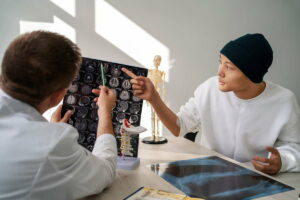

View Topics

Chemotherapy is a vital treatment for different cancers. It involves the use of powerful drugs to destroy harmful cells. While highly effective, it can also impact healthy cells. It leads to many side effects like chemo brain. Neurological side effects are increasingly recognized as a significant concern for patients. Drugs can affect the nervous system…

Sleep deprivation is more than just feeling groggy or unfocused. It can have serious, long-term consequences on the brain. Many people may shrug off a few nights of poor sleep. The impacts of sleep deprivation can be far more severe than most realize. Chronic lack of sleep can lead to significant neurological damage. It impacts…

Alzheimer’s care is at a turning point. This is because there are constant advances in the way patients are diagnosed, treated and supported. Every year, more and more elderly people are dying and the prevalence of Alzheimer’s disease is increasing. This underscores the critical need for innovative care strategies. Staying at the forefront of Alzheimer’s…

Painful sensations affect us throughout our lives, and everyone should understand how pain works. Pain perception involves a complex interplay between various components of the nervous system. The process begins with pain receptors. They are also known as nociceptors. They are specialized nerve endings throughout the body. These receptors detect harmful stimuli. These are extreme…

Navigating the complexities of mental health can be a daunting task. It’s especially when trying to differentiate between neurological and mental disorders. These two broad categories encompass a wide range of conditions. Those affect our thoughts, emotions, and behaviors. They may sometimes present with overlapping signs. However, understanding the fundamental contrast between these issues is…

Your brain is the command center of your body. It’s responsible for everything from thought and emotion to movement and recall. Keeping this area healthy is crucial. It’s for overall well-being and quality of life. As you age, your cerebrum may naturally undergo some changes. However, there are steps you can take to support its…

Our brains control everything we do, from breathing to thinking. When something goes wrong, it can change our whole life. That’s why it’s so essential to understand neurological disorders. These are problems that affect our brain, spinal cord, and nerves. They can make it hard to move, think, or feel normally. Knowing these disorders helps…

Everyone has experienced being sick at least once in their lives. Some diseases can be acquired over time, while others are genetic. It’s important to understand epilepsy, its symptoms, and causes. It’s important to understand if epilepsy can be inherited and how genetics play a role in its development. Some forms of the disease may…

Our bodies are amazing natural marvels, with complex systems that cooperate to support our survival. Among these systems, the nervous system is particularly interesting and intricate. It serves as the body’s information superhighway, transmitting and receiving messages all the time to regulate every action we take. Our nervous system is behind everything from the simplest…

It’s a chronic state affecting millions worldwide. This metabolic ailment is characterized by high glucose ranks. It can occur when the body: Doesn’t produce enough insulin. Or doesn’t use it effectively. This hormone is always produced by the pancreas that helps glucose enter the tissues. There are two primary forms: 1 and 2. The first…